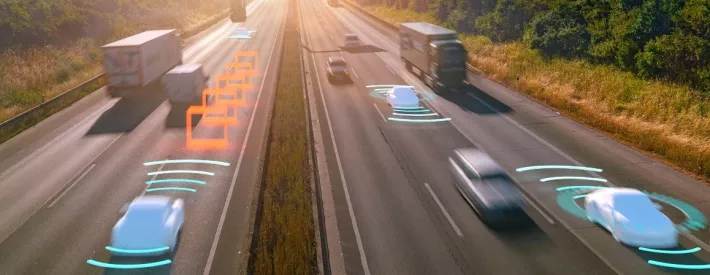Why ADAS makes upskilling even more important

More vehicles now integrate Advanced Driver Assistance Systems (ADAS) to improve road safety. But after vehicles leave the workshop these systems need to be properly calibrated, otherwise it could lead to a disaster
ADAS systems that help improve driver safety standards are vital for a car’s safety and form a critical part of EuroNCAP’s safety rating system. But to ensure ADAS items continue to work correctly they need to be recalibrated after remedial work. It’s a point that has already been raised by Thatcham Research and now reinforced by ATS Euromaster. If they aren’t vehicle safety could be compromised and insurance cover potentially invalidated.
The tyre service and maintenance provider says fleets need to consider recalibration work in any SMR undertaken on a vehicle that might affect the proper functioning of the affected safety system.
ADAS features include lane departure warning, autonomous emergency braking, and adaptive cruise control.
Calibration compares what the ADAS feature is doing against how the system should be performing, before adjusting to ensure optimum performance against factory settings.
Mark Holland, operations director at ATS Euromaster, says: "More and more vehicles come to us for work now that will require ADAS recalibration that the customer just isn't fully aware of. We have a duty of care to educate the customers who bring their vehicles to us and we are currently developing our ADAS offer and capabilities at pace to meet this demand."
Holland points out that new cars have a variety of new and traditional ADAS functions, ranging from adaptive cruise control, and radar braking to lane control assist.
“For example, if you’ve had the tyres changed and a wheel alignment has been necessary, you will need to ensure the radar and the front camera are recalibrated to factory settings, otherwise it may not work correctly. It’s a significant safety issue today for combustion and hybrid vehicles, which will grow into a bigger issue as electric vehicles become more commonplace. However this is not just an EV issue.
“We’d also advise fleet managers to ensure their drivers know to take their vehicle in for fault analysis if one of the ADAS dashboard warning lights come on. Otherwise, the vehicle’s insurance could be invalidated,” he says.
Thatcham Research, the motor insurers’ automotive research centre, insists that inspection, realignment and calibration requirements are considered under all repair situations where any of these features are included within the repair, service or maintenance procedure:
- ADAS sensors;
- Parts likely to affect the operation and functionality of ADAS sensors; or
- Vehicle geometry (steering & suspension/wheel alignment).
It says that such items must be completed post repair to confirm the vehicle’s sensors are working within manufacturer set tolerances.
ADAS integration is only going to become a bigger part of vehicles’ onboard systems, so having the skills to work on them will be incredibly important as the industry develops.




